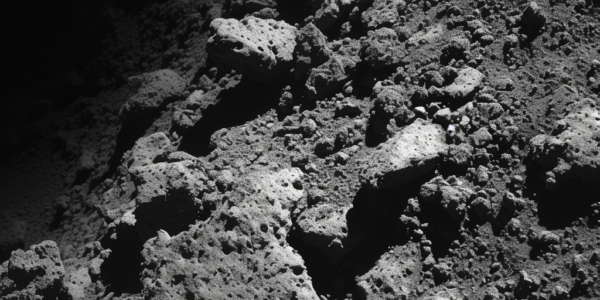Asteroid Apophis to Make Close Pass by Earth in 2029
Learn about the upcoming close encounter with asteroid Apophis in 2029, providing a unique opportunity for scientific study. Despite no risk of impact, Earth’s gravity will alter Apophis’ orbit, leading to missions by NASA and ESA to study the asteroid up close. Discover how this event will enhance our knowledge of asteroids and planetary defense strategies.
Rare Asteroid Sample on Display at University of Arizona Museum
NASA’s OSIRIS-REx spacecraft has brought a small piece of an asteroid to the University of Arizona’s Alfie Norville Gem & Mineral Museum. This rare extraterrestrial rock sample is now available for public viewing, making it one of only three such samples in the world. After a seven-year journey, the pebble from asteroid Bennu landed in a remote area of the Utah desert and is now on display at the museum in Arizona.
NASA’s Lucy Spacecraft Makes Groundbreaking Discovery on Small Asteroid System
NASA’s Lucy spacecraft has made a groundbreaking discovery during its mission, revealing unexpected findings during its encounter with the asteroid Dinkinesh. The mission’s success in capturing detailed insights into the asteroid system’s composition and history marks a significant milestone in space exploration, providing valuable data for scientists to unravel the mysteries of celestial bodies.
NASA’s Billion-Dollar Mission to Stop Potentially Devastating Asteroid
NASA paid a man $1 billion to prevent the potentially devastating asteroid Bennu from hitting Earth. The mission involved sending a spacecraft to retrieve a sample from the asteroid’s surface, providing valuable insights into potential disaster preparedness. The catastrophic impact of Bennu crashing into Earth would result in devastating consequences, highlighting the importance of ongoing research and initiatives in planetary defense.
Rare Active Asteroids Challenge Solar System Theories
Rare asteroids showing unusual active properties challenge existing theories about the solar system. The Active Asteroids project, led by University of Washington scientist Colin Orion Chandler, has discovered 15 of these rare asteroids with the help of over 8000 volunteers. These active asteroids possess traits that blur the lines between asteroids and other celestial objects, presenting new opportunities for insights into solar system evolution, planet formation, and the origins of water on Earth.
Minimoons: The Key to Unlocking Secrets of the Early Solar System
Discover the secrets of the early solar system by studying Earth’s ‘minimoons’ or ‘quasi-moons’, which could provide valuable clues about the origins of our solar system. These tiny cosmic bodies, located near Earth’s orbit, may hold the key to understanding the conditions and composition of the early solar system, making them prime candidates for scientific exploration.
Groundbreaking Discovery: Water Molecules Detected on Surface of Two Asteroids for First Time Ever
Scientists have made a groundbreaking discovery by detecting water molecules on the surface of two asteroids for the first time ever. The data was collected using NASA’s now-retired SOFIA airborne observatory, shedding new light on the distribution of water in our solar system. This groundbreaking discovery opens up new avenues for understanding the composition and distribution of water in our solar system, offering valuable insights into the origins of water on Earth and other celestial bodies.
Asteroid Ryugu’s Organic Compounds Could Provide Insights into Origin of Life
Astronomers have made a groundbreaking discovery that could potentially provide insights into the origins of life. The researchers have found evidence of carbon-rich organic compounds on the surface of an asteroid called Ryugu. This discovery has raised the possibility that…
NASA’s Lucy Spacecraft Gears Up for Deep Space Exploration of Trojan Asteroids
The NASA spacecraft Lucy is embarking on an exciting journey to explore the distant realms of the Trojan asteroids. Fresh off its first asteroid encounter, Lucy is now gearing up for the next phase of its mission, transitioning from its…
NASA’s Planetary Defense Capabilities Tested as Small Asteroid Disintegrates over Germany
NASA’s planetary defense capabilities were put to the test as a small asteroid, named 2024 BX1, harmlessly disintegrated over Germany. The asteroid, approximately 3 feet in size, was detected by NASA’s Scout impact hazard assessment system, providing advanced warning of…










